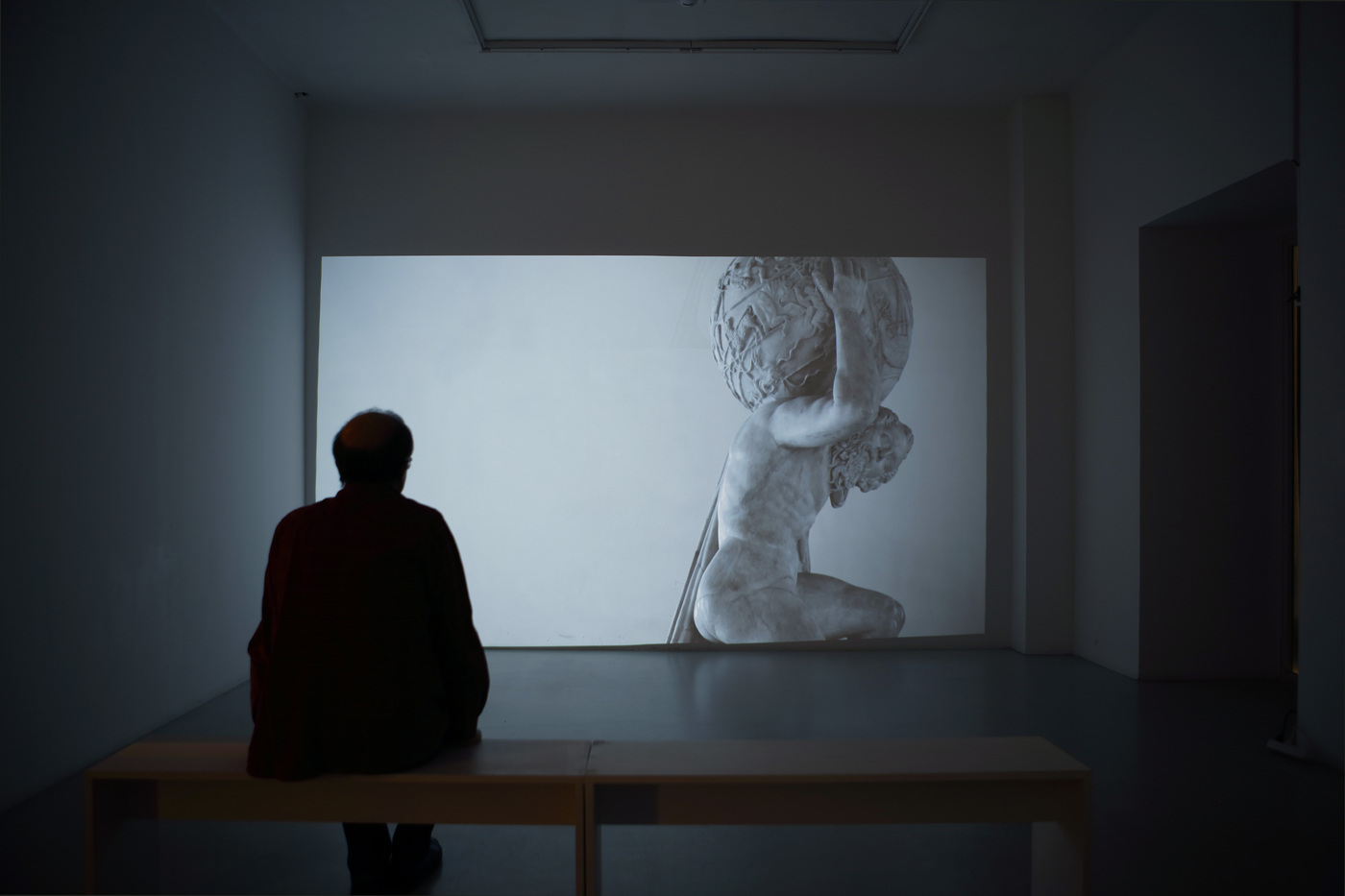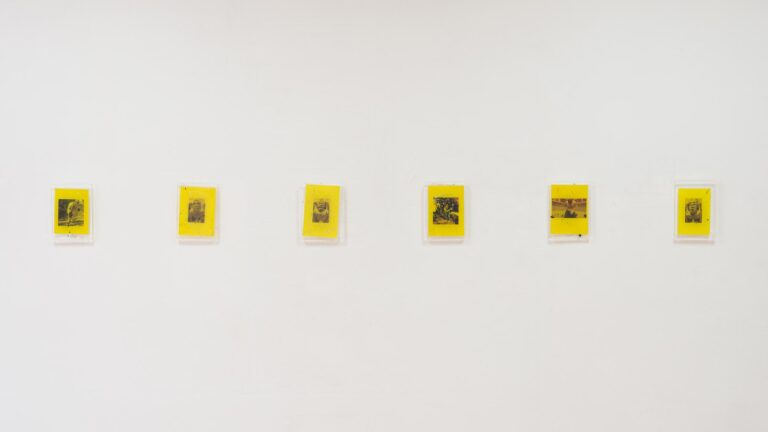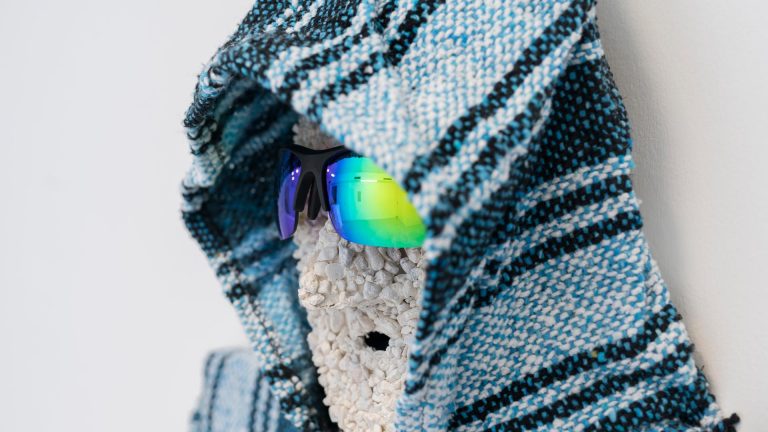Artist: Francesco Jodice
Exhibition title: Hard
Venue: Marta Cervera, Madrid, Spain
Date: February 14 – April 29, 2017
Photography: all images copyright and courtesy of the artist and Marta Cervera, Madrid
Francesco Jodice was born in Naples in 1967. He lives and works in Milan. His art explores the transforming social landscape of our time, with a particular focus on urban anthropological phenomena and the creation of new participatory processes. His projects are aimed at building a common ground between art and geopolitics, presenting artistic practice as a form of civil poetics.
A retrospective of his work is currently on show at the Winterthur Fotomuseum, Switzerland. He has been in major group exhibitions such as Documenta, the Venice Biennale, the São Paulo Biennial, the ICP Triennial in New York, Liverpool Biennale and has shown his work at the Castello di Rivoli in Turin, Tate Modern in London and the Prado and 2 de mayo en Madrid among others.
In the work of Francesco Jodice, one can intuitively see the processes of research that de ne its form. The artist undertakes rigorous research into themes that appear around his question of reference: the contemporary geopoli- tical situation and its implications for society and territory, as a whole.
In recent years, Jodice has closely monitored the decline of the West, producing an extensive visual record of a period that has slowly constituted the end of the Short Century and with it, the dethronement of Western culture.
In ‘Hard,’ two chapters of this recent research are connected: Atlante and Sunset Boulevard. Together they form a formal and narrative essay that gives us a chance to re ect upon the changes that have taken place and to be aware of the realities and ways of life that are now part of our past. This moment and place of change creates a position from which we can get a sense of what the near future will be. That awakening, or moment of clarity, is the one that for Jodice produces meaning and therefore, beauty.
Sunset Boulevard is a series of photographs and texts from the Far West, a territory that we mentally visualise between the Pacic coast and the deserts of the interior. On the one hand, we nd three large format photographs taken in Monument Valley and Colorado. They are images that we recognise easily; that form part of our collec- tive imagination, built up thanks to the ubiquity of American cinema. Monument Valley forms an image that is so iconic, present and familiar, that it is impossible to see it as it really is or, what is more, it is impossible to think that it is actually true. This is the image chosen to represent the American dream, the stereotype of the Far West; the arrival to a wild, virgin territory. Don DeLillo described this type of encounter in Ruido de Fondo (background noise) through the case of a barn converted into a tourist attraction: “Nobody sees the barn” (…) “When you’ve seen the adverts of the barn it’s impossible to see the barn itself.”
Part of Sunset Boulevard is also a number of several smaller photographs, accompanied by a brief text or stanza. Each image shows a new face never seen before of the polyhedral American dream: an abandoned house, xenophobic grafiti, or a mural representing the American prairies, which is nothing other than a storefront selling small arms and hunting equipment. The gold rush until the nancial crisis, known as the “long” American century, has seen the spirit of the forty-niners transformed into the famous American dream and later truncated by the nancial crisis. What still remains alive of Western culture? Jensen explains it this way in one of the notes at the foot of the photographs: “There are no nations. There are no people. There is no West. Only large corporations”.
The Atlante video is itself a visual test in the form of a synecdoche: a succession of images, paradigms and con- tradictions that give us a key, take by take, of the end of the Short Century. Archive material is intermingled with footage from the Atlas Farnese, in the National Archaeological Museum in Naples. As the video progresses, diffe- rent parts of the Titan sculpture are revealed bit by bit, supporting the weight of the celestial sphere. A portrait of the short century and of its long and slow exit gradually appears.
In one of the scenes, part of a silent lm, a young woman looks at the camera and says, “It’s not the end of the world … but you can see it from here”. Something that sounds like a premonition, since the end of the West (as we have known it so far) we follow through screens. There are also excerpts from videos of American family life in residential neighbourhoods in the 50s, and fragments of television advertisements from the 80s. Images of happy moments become sinister in our anachronistic gaze, taken from a very different position from when they were originally taken. The expression of the face of the Atlas Farnese, a mixture of resignation and suffering, bearing the weight of the Universe from the western end of the Earth, condemned to be there for all eternity, can only corroborate the intuition that something began to fail years ago.
The West is a dif cult place today. The question now is, what does the global culture, on which the new century is built, have in store for us on? Who is going to relieve the titan Atlas of the hard work of bearing the weight of the Universe?
-Gema Melgar
1.“Short Century” refers to the “short” twentieth century: the period from 1914 to 1991
2. Name used to describe those who reached California in search of gold in 1849.
Francesco Jodice, Hard, 2017, exhibition view, Marta Cervera, Madrid
Francesco Jodice, Hard, 2017, exhibition view, Marta Cervera, Madrid
Francesco Jodice, Hard, 2017, exhibition view, Marta Cervera, Madrid
Francesco Jodice, Hard, 2017, exhibition view, Marta Cervera, Madrid
Francesco Jodice, Atlante, 2015, Film, HD, 9’
Francesco Jodice, Atlante, 2015, Film, HD, 9’
Francesco Jodice, Hard, 2017, exhibition view, Marta Cervera, Madrid
Francesco Jodice, New York, #017, 2014, 53x53cm, Inkjet on cotton paper, hand written on tape, dibond aluminium, without plexiglass, woodframe
Francesco Jodice, Los Angeles, #005, 2014, 53x53cm, Inkjet on cotton paper, hand written on tape, dibond aluminium, without plexiglass, woodframe
Francesco Jodice, Utah, #003, 2014, 53x53cm, Inkjet on cotton paper, hand written on tape, dibond aluminium, without plexiglass, woodframe
Francesco Jodice, Utah, #040, 2014, 53x53cm, Inkjet on cotton paper, hand written on tape, dibond aluminium, without plexiglass, woodframe
Francesco Jodice, Monument Valley, #016, 2015, 100x200cm, Inkjet on cotton paper, dibond aluminium, plexiglass, woodframe
Francesco Jodice, Monument Valley, #015, 2015, 100x200cm, Inkjet on cotton paper, dibond aluminium, plexiglass, woodframe
Francesco Jodice, Nevada, #010, 2014, 53x53cm, Inkjet on cotton paper, hand written on tape, dibond aluminium, without plexiglass, woodframe
Francesco Jodice, Colorado, #024, 2014, 100x147cm, Inkjet on cotton paper, dibond aluminium, plexiglass, woodframe





















